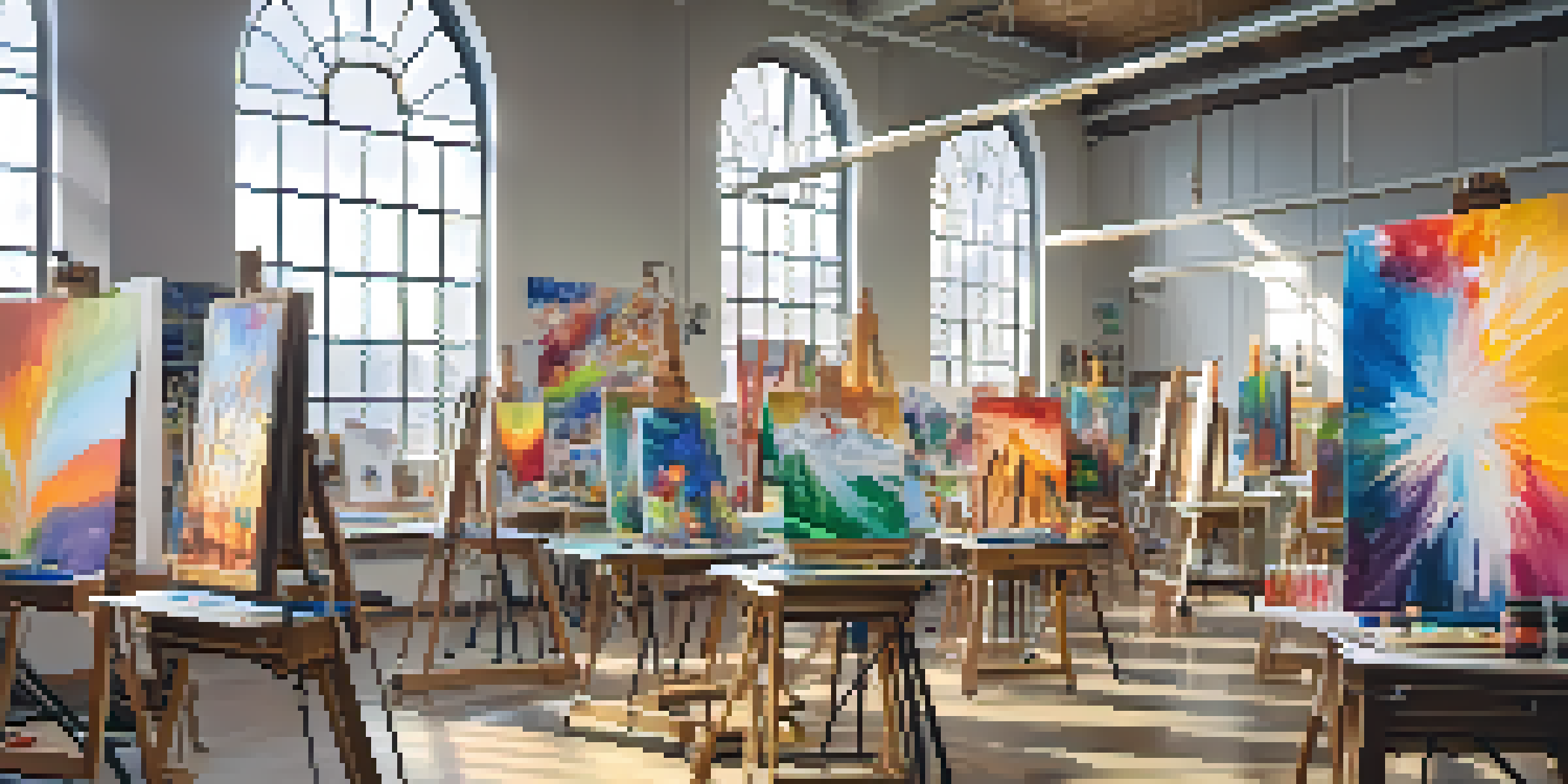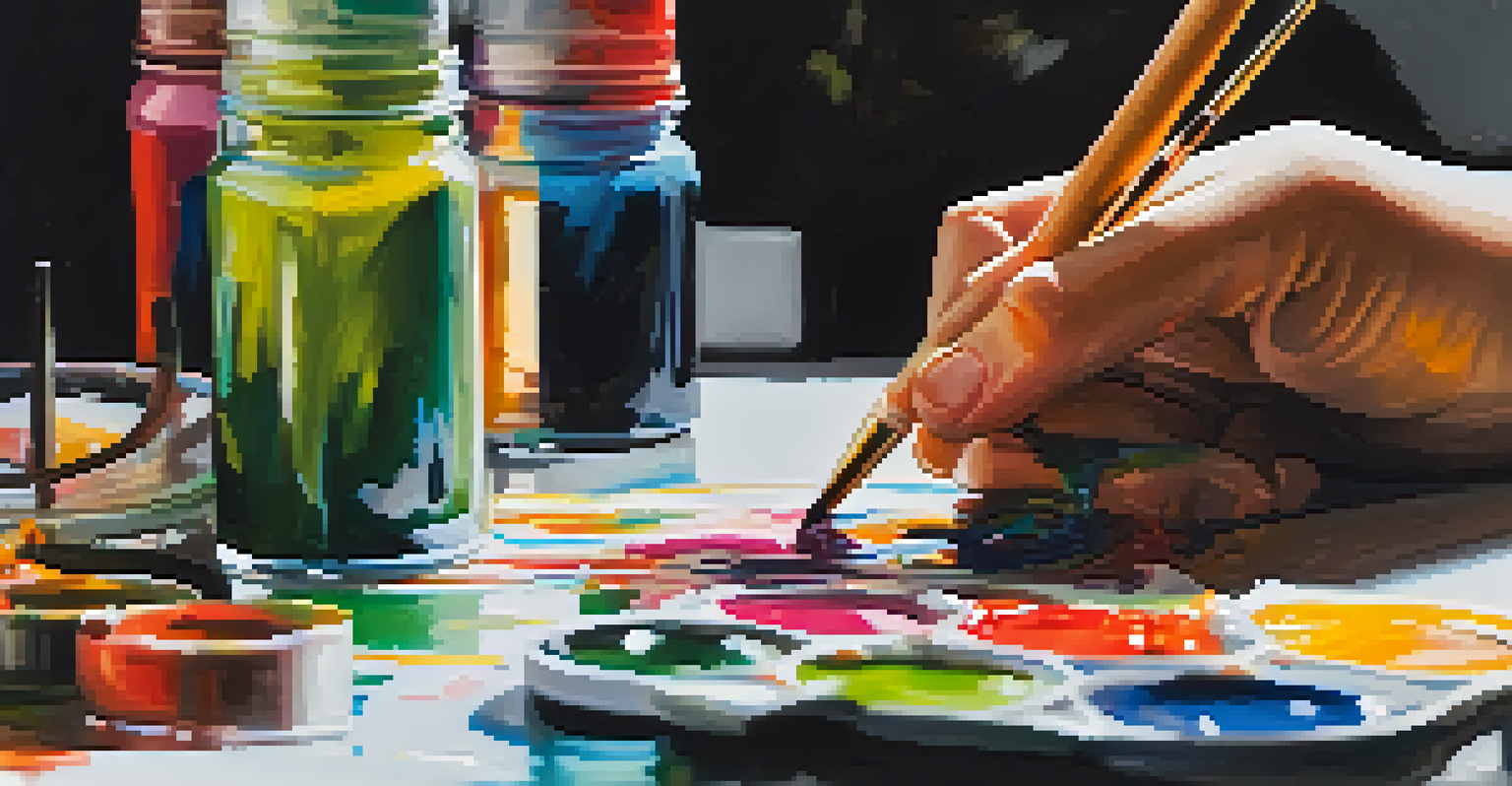Art Education: How Schools Influence Painting Techniques

The Role of Schools in Art Education
Schools play a crucial role in shaping students' artistic abilities. They provide a structured environment where creativity can flourish, often introducing students to various art forms, including painting. Through art education, students not only learn techniques but also develop their unique artistic voice.
Every artist was first an amateur.
In many cases, schools employ qualified art teachers who can guide students through the complexities of painting. These educators offer insights into different styles, mediums, and methods, helping students explore their interests. The exposure to diverse techniques can ignite a passion for painting that lasts a lifetime.
Additionally, schools often provide resources like art supplies and studio space, which can significantly enhance the learning experience. Access to these tools allows students to experiment freely, fostering innovation and creativity that might not occur in a less supportive environment.
Curriculum Design and Its Influence
A well-structured art curriculum can significantly influence students' painting techniques. By integrating various styles and historical contexts, schools can broaden students' perspectives on art. This exposure helps them understand the evolution of painting and encourages them to develop their interpretations.

Moreover, a balanced curriculum that includes both theory and practice enables students to apply what they've learned. For instance, studying famous painters can inspire students to adopt similar techniques while also encouraging them to innovate. This blend of learning and doing is vital for their artistic growth.
Schools Foster Artistic Growth
Schools provide a structured environment and resources that nurture students' creativity and artistic abilities.
Incorporating technology into the curriculum, such as digital painting tools, can also enhance students' skills. By blending traditional techniques with modern technology, schools can prepare students for contemporary artistic practices, ensuring they are well-rounded artists.
Peer Interaction and Collaboration
Art education is not just about individual talent; it's also about collaboration. In schools, students often work together on projects, sharing techniques and ideas that can influence their painting styles. This collaborative spirit fosters a sense of community and encourages healthy artistic competition.
Art is not what you see, but what you make others see.
Through group critiques and peer feedback, students learn to articulate their thoughts about art. This skill not only helps them improve but also builds their confidence in sharing their work. Engaging with peers can also expose students to new perspectives and techniques they might not have encountered otherwise.
These interactions can lead to lasting friendships and partnerships that extend beyond the classroom. As students collaborate, they create a support network that nurtures their artistic endeavors and encourages them to experiment with different painting techniques.
Art Exhibitions and Competitions
Participation in art exhibitions and competitions can be a pivotal experience for students. Schools often provide opportunities for students to showcase their work, which can boost their confidence and motivate them to refine their painting techniques. Seeing their art displayed can be incredibly affirming.
Competitions, whether local or national, push students to elevate their skills. The desire to impress judges and peers can lead them to explore new ideas and methods, further enhancing their artistic repertoire. This drive for excellence often cultivates a lifelong passion for painting.
Collaboration Enhances Learning
Peer interaction and group projects in art education encourage students to share techniques and gain new perspectives.
Furthermore, exhibitions allow students to receive constructive feedback from a broader audience. This external validation can help them understand their strengths and areas for improvement, guiding their artistic journeys in meaningful ways.
Influence of Art History on Techniques
Understanding art history is vital for students to grasp the context behind various painting techniques. Schools often incorporate art history into the curriculum, allowing students to see how different movements and artists have influenced modern practices. This knowledge can inspire students to experiment with techniques of the past.
For instance, learning about Impressionism can lead students to explore color blending and brushwork in new ways. By studying famous painters, students can adopt and adapt these techniques to form their unique styles. This historical perspective enriches their understanding and appreciation of painting.
Additionally, art history lessons can help students recognize the importance of cultural influences on techniques. As they learn about global art traditions, they may be inspired to incorporate diverse elements into their work, resulting in a more enriched artistic expression.
The Role of Art Supplies and Materials
Access to quality art supplies is essential for nurturing painting techniques in students. Schools that provide a variety of materials, from acrylics to watercolors, enable students to explore different mediums and find what resonates with them. This experimentation is crucial for developing their personal style.
Moreover, understanding the properties of different materials can significantly influence a student's technique. For example, learning how to layer colors with oils versus the quick drying nature of acrylics can lead to vastly different results in their artwork. Such knowledge empowers students to make informed choices in their painting.
Teacher Guidance is Crucial
Skilled art teachers offer essential support and personalized feedback that significantly influence students' painting techniques.
Schools that encourage students to utilize various tools—like brushes, palette knives, and even unconventional materials—can spark creativity. This freedom to experiment often leads to innovative techniques that students incorporate into their painting practices.
The Impact of Teacher Guidance on Technique Development
The influence of teachers on students' painting techniques cannot be overstated. Skilled art teachers provide not only technical instruction but also emotional support, helping students navigate their creative journeys. Their mentorship can inspire students to take risks and explore new techniques.
Teachers often share their own experiences and challenges, making the learning process more relatable. By demonstrating techniques firsthand, they can clarify complex concepts, making them accessible to students. This hands-on approach can be pivotal in helping students grasp difficult painting methods.

Additionally, a supportive teacher environment allows for personalized feedback. Understanding individual strengths and weaknesses enables teachers to guide students toward specific areas of improvement, fostering their growth as artists and enhancing their painting techniques.